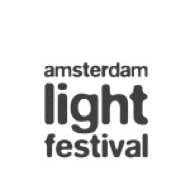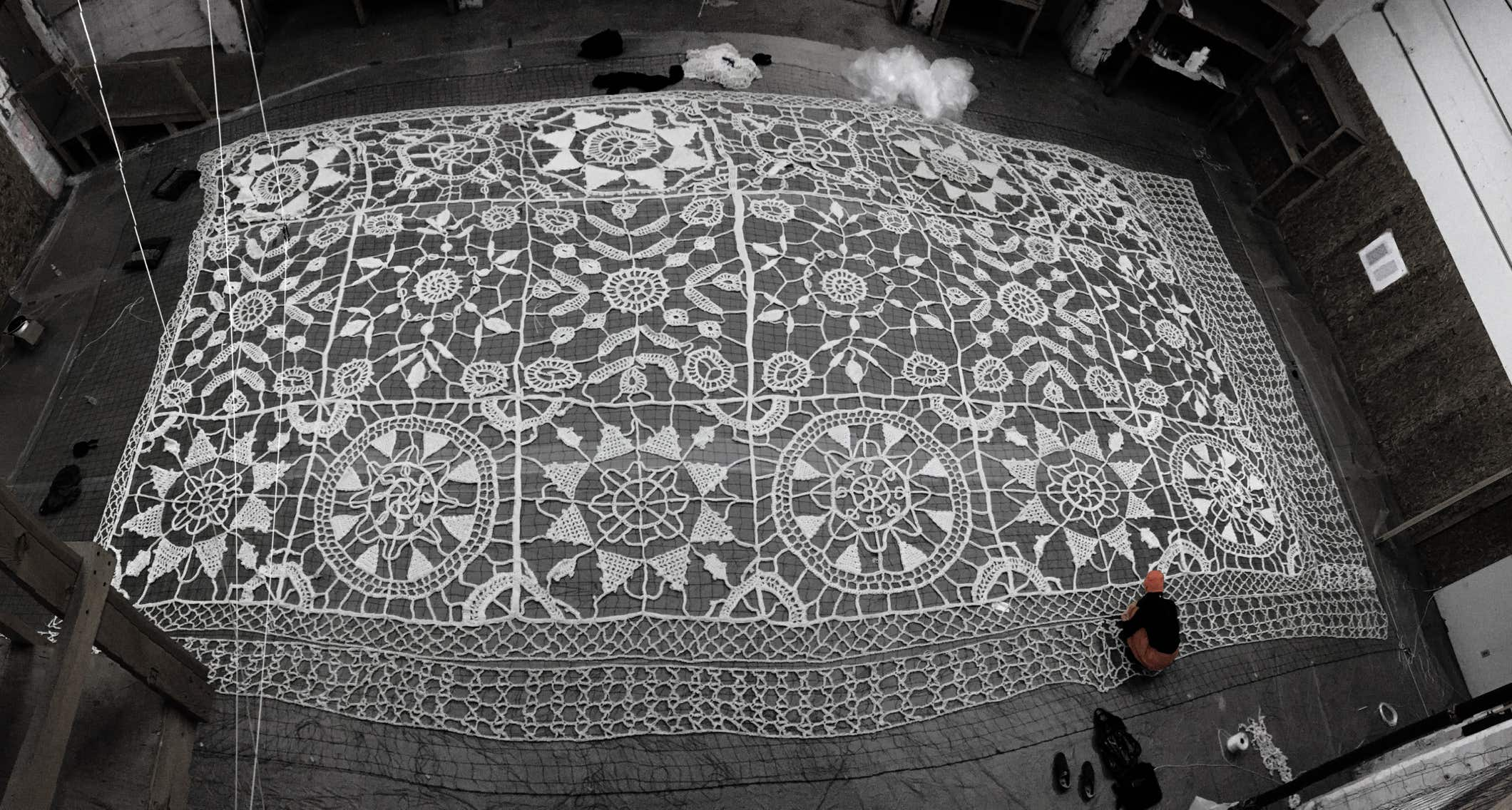
Panoramic view of The lace during final assembly.
THE LACE
FABRICATION & INSTALLATION
2016 Amsterdam Light Festival
The first step for the fabrication of The Lace was to determine how each lace motif could be crocheted. The six antique motif designs used for the proposal were found in a 100 year old archive of needle made laces and chosen for their beauty in repetition of the shape and their thematic variations. However, needle made lace proved to be not only very time consuming, but also not feasible as it required working with short length of yarn .
The task was to find a method that would allow us to make a large scale lace motif with a continuous yarn, without cutting, to maximize the strength of the finished work. Crochet seems to be the most promising method that could simulate the needle made lace while maintaining the durability of the weave.


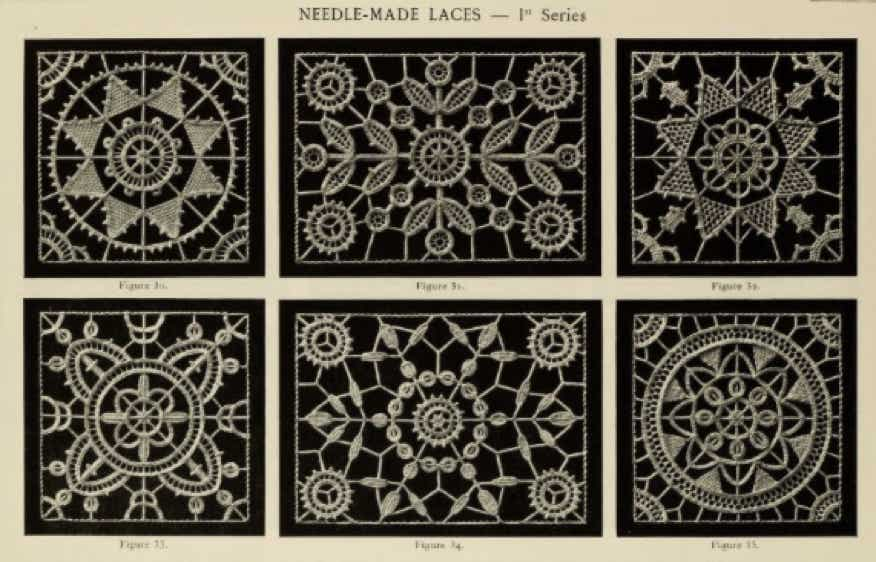
Motif design from 'Needle Made Laces' TH De Dillmont, DMC Library
Video © 2016 Chessin Gertler & Choi+Shine
First prototype of full size motif.
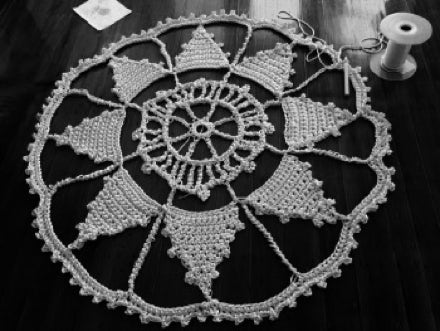
Details of the first prototype
Details of the first prototype
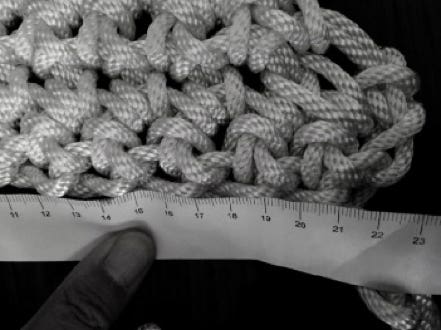


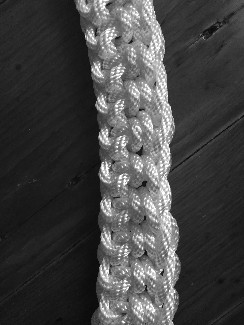
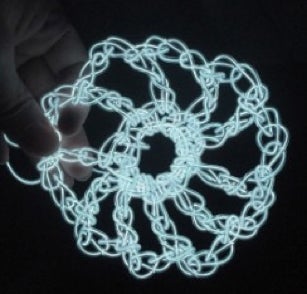
The initial proposal called for electroluminescent wire, which emits light creating a beautiful glow around the Lace. However, the EL wire proved too fragile and too difficult to crochet. The light source within the wire often broke due to the bending of weaving or knitting process. Other optically emissive cords and wires were tested for the Lace, such as fibreoptic cords, but the light source could not travel very far due to the bending and the stiffness of the cord did not allow for the dimensional control which resulted in uneven stitches and irregular patterns.
The best material was a 5mm double braided polyester cord, that was soft enough to weave, weather-proof, and optically suitable with esternal light source.
The Lace used 73,000 ft (22,250 meters) of cord and weighs about 650 pounds (330kg).
The lace is made from polyester and polyethylene. It is anticipated that the lace will be recycled at the end of its life.
Sample test with EL wire
Jin Choi, one of the two designers of the project who had never crocheted before, taught herself how to crochet for this project, and created the overall design and patterns for the Lace.
For each motif, Jin started with a small study, recreating traditional needle made lace motif in crochet pattern. After her research of the various lace archives, she slowly crocheted big and bigger versions of each motif, adjusting the type and number of stitches and the paths, keeping the original design intact despite the increasing scale and thickness of the yarn. Each motif is hand crocheted and consists of a single, continuous yarn, which is broken only for changing spools or for intentional independent connectors.
For each motif, scaling the design took many trials, and she reworked the pattern many times before finalising each motifs. It was very important to her to keep true to the original concept and to the lace making tradition.
Once she completed a prototype of a motif, she wrote detailed instruction and created a technical pattern. Each of Jin's 6 prototype motifs were to be duplicated twice by other crocheters to make total of 18 motifs. Due to the scale of the project and the weight of the material, crocheters suffered from cracked finger nails and joint pain. Many crocheters gave up and only few could contribute to the project.
Crocheters: Jin Choi, Insuk Durham, Hyokyung Lee, Lara Pollack and Emma Lanctot
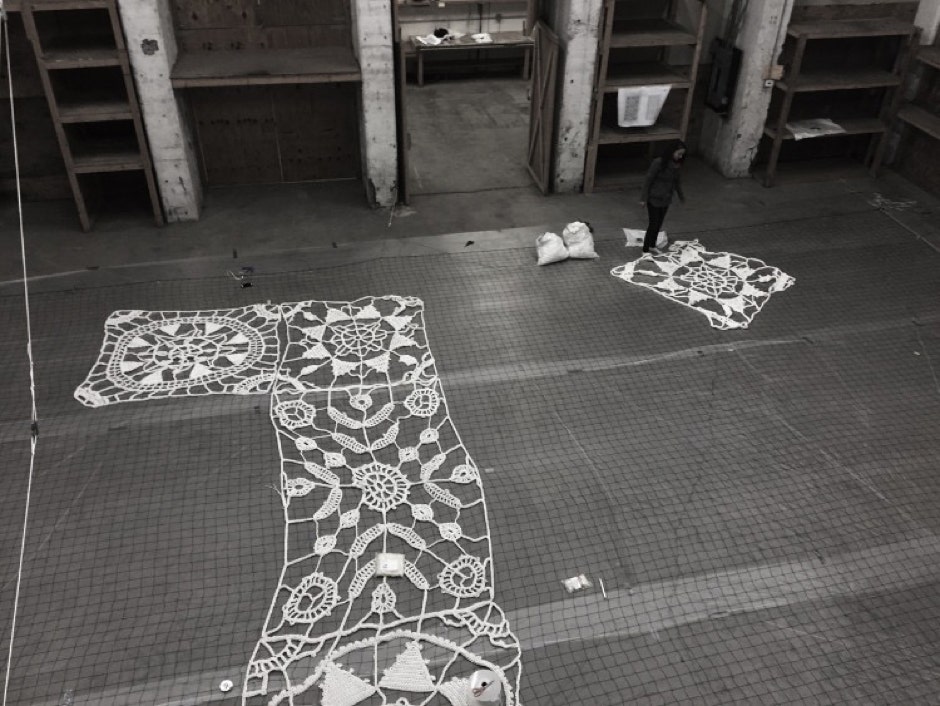



The paper folded model was used to study the final form and hanging points.
First hanging test.

Lighting test with the artificial and natural light


The Lace arrived in Amsterdam on time without any damage. Installation began with unwrapping the package and unfolding the Lace without getting it tangled.




The installtion work stopped many curious passers by. Once installed, people from a neighboring office came to meet the designers, saying "We have no choice but to look at the art installed here for the next 6 weeks. We are glad that it is such a beautiful piece that was chosen to be installed here. Thank you for making beautiful art."


